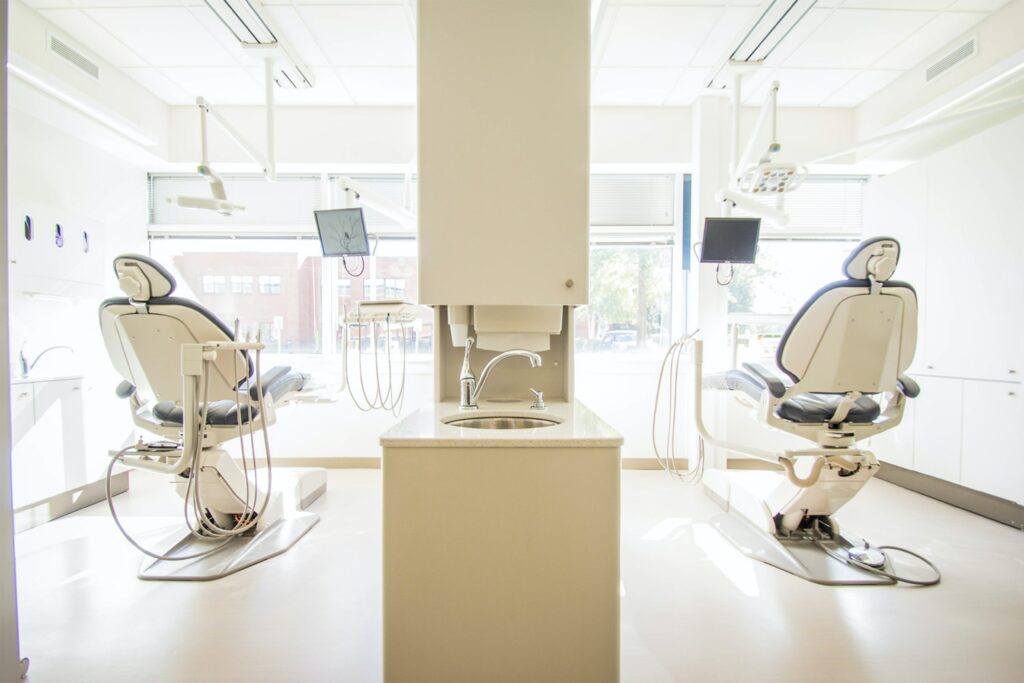People are realizing more and more that design in medicine is very important. Previously, companies producing medical devices strongly focused on the engineering aspect, where now, over several years, significant progress can be noticed in the aspect of design. The aim of cooperation with designers is to increase the satisfaction of patients and medical staff, i.e. direct users. The design is directly oriented towards improving the relationship between the user and the devices by changing the appearance of the other to reduce fear and stress for the patient. The positive psychological effect achieved by using well-designed medical equipment improves the relationship between the patient and the doctor too. Designers are able to design useful interfaces with functionalities that can be guessed by looking at them.
The Philips company began research under the name Ambient Experience Design, which was to combine medical engineering with design to increase the level of patient satisfaction. As part of the program, rooms with computed tomography have been equipped with equipment of pleasant soft shapes. In addition, smoothly changing lighting and displaying pictures on the walls during the research, absorbing the attention of children and relaxing adults. It turned out that thanks to this, patients are less afraid of tests and are calmer, and the tests themselves have to be repeated less often because the number of errors resulting from undesirable movements of the patient has decreased. The DLR Research Institute has developed a robot design that could assist in surgical operations. The robot has a part that is similar in shape to a human arm, thanks to which they can efficiently assist the surgeon without taking up too much space. In addition to the robotic arms, the MIRO project also includes compatible designs of the operating table, the surgeon’s console, and the support system supporting the robot arms. The casings of all devices are easy to clean and carefully hide all mechanical elements and electronics. The project was awarded the IF Product Design Award in the “advanced studies” category.
Nowadays, we can see some standout design trends in medicine. The first is the ability to communicate between the patient and the device. Another important trend concerns the change of the language of shapes, spaces with large smooth surfaces broken by sharper lines beginning to dominate. The dominant color is white, complemented by small color accents which, due to their neutrality, look clean and modern. The important part is to make the medical devices be clean and not just pretend to be clean, hence the growing popularity of smooth, shiny materials that are easy to clean and which, in combination with the white where even small details are visible.
The medical design has great potential due to the enormous variety of areas, and at this time it badly needs specialists who will be able to develop and support progress in this field.
Tag: design trends
Automotive intelligent cockpit design trends
| short summary of a cockpit design trends report, published early 2021
According to a report of 2020 looking at new car models and concepts cars released in the last years, following major directions of intelligent automotive cockpit design trends can be summarized:
- Richer versatilities
New products are getting introduced with developing automotive electronics, such as driver monitoring systems, driving recorders, rear row and co-pilot entertainment displays. Additionally, intelligent surfaces allow further versatility – window or sunroof glasses can become displays and intelligent seat materials can become interfaces as well. - Multi-channel, fused human-vehicle interaction
New ways besides touch and voice control are active voice assistants, gesture control, fingerprint reader, sound localization, face recognition and holographic imaging. These multi-channel interaction modes can contribute to safer use and driving as well as deliver an extended user experience. - 3D and multiple screen cockpit displays
We see dual-, triple- and quint-screen and A-pillar display implementations for delivering control, co-pilot and rear row interactions. - “User experience”-centricity and scenario-based interaction
In-vehicle scenario modes are getting in focus – the car interior should serve as an intelligent, connected, flexible and comfortable personal space, for e.g. driving, resting, working or even shopping. As a UX-centered implementation example the Mercedes-Benz S-Class ambient lighting system was named, that uses 263 LEDs to adapt to driving situations (warnings) or give a real-time feedback of interactions with the onboard computer. - Interaction with every surface via intelligent materials
New surface materials are introduced in concept cars to explore touch control possibilities like displaying fuctional buttons in new ways. - Touch feedback as key technology for higher level of safety
Besides TIER-1 suppliers also several start-ups are developing touch feedback technologies for supporting less distraction and more effective driver-car interaction. - Software systems will be keys of differentiation
The introduction of Android to in-car entertainment systems was a big step. The need for personalization and simultaneous software and hardware iterations and 3D vision are new challenges for the operations system development in realizing intelligent cockpit systems.
Source
[1] Summary of: “Automotive Intelligent Cockpit Design Trend Report, 2020” by ReportLinker. Retrieved on 09.01.2022
https://www.reportlinker.com/p06003502/Automotive-Intelligent-Cockpit-Design-Trend-Report.html?utm_source=GNW
